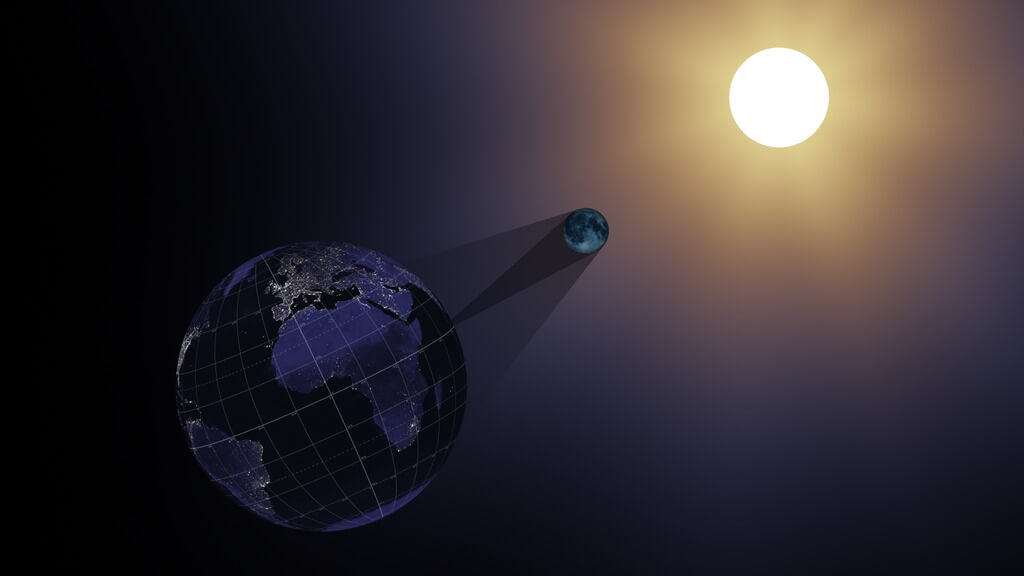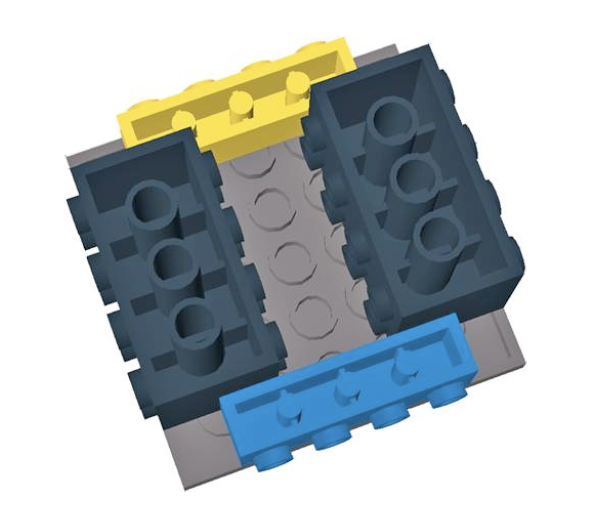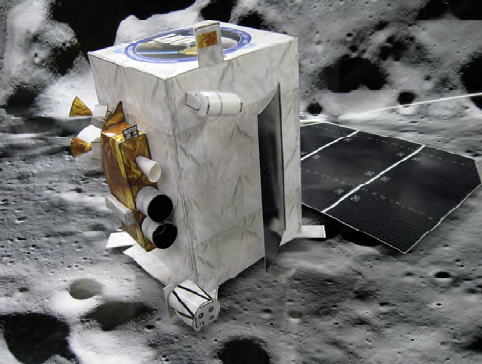Lunar Activities
Collected here are a few educational activities related to eclipse science that particularly highlight the Moon, recommended by the LRO education team. You are welcome to appropriately modify the activities as needed to ensure they meet the needs of your audience as well as the space, time, and resources you have available.

A Total Solar Eclipse
On April 8, 2024, a total solar eclipse will cross the United States. On Earth, we are very lucky to be able to view total solar eclipses. Thanks to the ratio between the size and distance of the Moon and the Sun, the two bodies appear to be roughly the same size in our sky.
The following activities explore the relationship of the Earth to the Moon and the Sun so participants can learn how and why eclipses occur.
Solar eclipses are a great way to bring space science to the ballpark through hands-on activities, demonstrations, and other interactive elements.
This activity is easy to do outdoors or indoors and requires few supplies. It asks participants to model orbits and observe how the Moon can block the Sun's light. For ages 4 and up
This activity encourages participants to confront their misconceptions about the size and distance of Earth's Moon. Using just balloons and string, participants create an Earth-Moon model and learn how the small Moon can cover the enormous Sun during a total solar eclipse. For Elementary - Middle School
This simple activity allows learners to explore apparent size and its relation to the eclipse. For ages 4 - Adult

Lunar Topography
The Moon's terrain impacts our view of the total solar eclipse. Thanks to NASA's Lunar Reconnaissance Orbiter, we know the topography of the Moon better than any other moon or planet in the Solar System! The peaks and valleys along the limb (silhouette edge) of the Moon affect the timing of totality, the shape of the Moon's shadow on Earth, and the location of phenomena such as the diamond ring effect. Using LRO data, we can predict these effects with better precision and accuracy than ever before. The following activities allow participants to model lunar topography.
The following two activities should be done together. Impact Craters models the general shape and appearance of impact craters (circular depressions, surrounded by raised rims, surrounded by ejecta). Splat! models the size (diameter) of the impact crater relative to the size (diameter) of the impactor in impact crater formation. It also models the destruction of the impactor during impact crater formation.
While a bit messy, this activity beautifully demonstrates how impact craters form and how they can tell us about the composition and geologic history of the Moon. For ages 8 and up
A great outdoor warm-weather activity, Kid Moon: Splat encourages participants to compare the size of impactors (water balloons) with the diameter of the craters they form (the splash zone). For ages 4 and up

Moon Phases and Observations
The following activities will help participants observe and understand our changing Moon.
Moon phases are commonly misunderstood. In this activity, participants model the phases with a light source and a small white ball. For ages 10 - 13 (and up)
Learners who keep a Moon Journal will track lunar phases for a month to directly observe how the Moon changes shape and location. They will record observations and try to find a pattern. For all ages
Light, Shadows, and Reflectivity
An eclipse is an interplay between light and shadows. In a solar eclipse, the Moon's shadow falls on the Earth. In a lunar eclipse, the Earth's shadow falls on the Moon. The following activities encourage visitors to make connections between personal experiences of shadows and light and transfer those concepts to the Sun-Earth-Moon system.
In this activity, participants confront the misconception that the Moon produces its own light. With only tennis balls, aluminum foil, and a flashlight, learners explore reflectivity (albedo). For ages 8 - 13
This activity is ideal for outdoor events, particularly those where participants will spend a long amount of time. In this activity, learners trace their shadows and return some time later to observe the changes. For Elementary and up

LRO and Our Moon
'To the Moon and Beyond' has many hands-on activities that are LRO-specific.
'Marvel Moon' has many hands-on activities and a comic book that students assemble as they complete activities.
Get animations, streaming video, cartoon characters, audio narration, interactive games at the Space Operations Learning Center!


